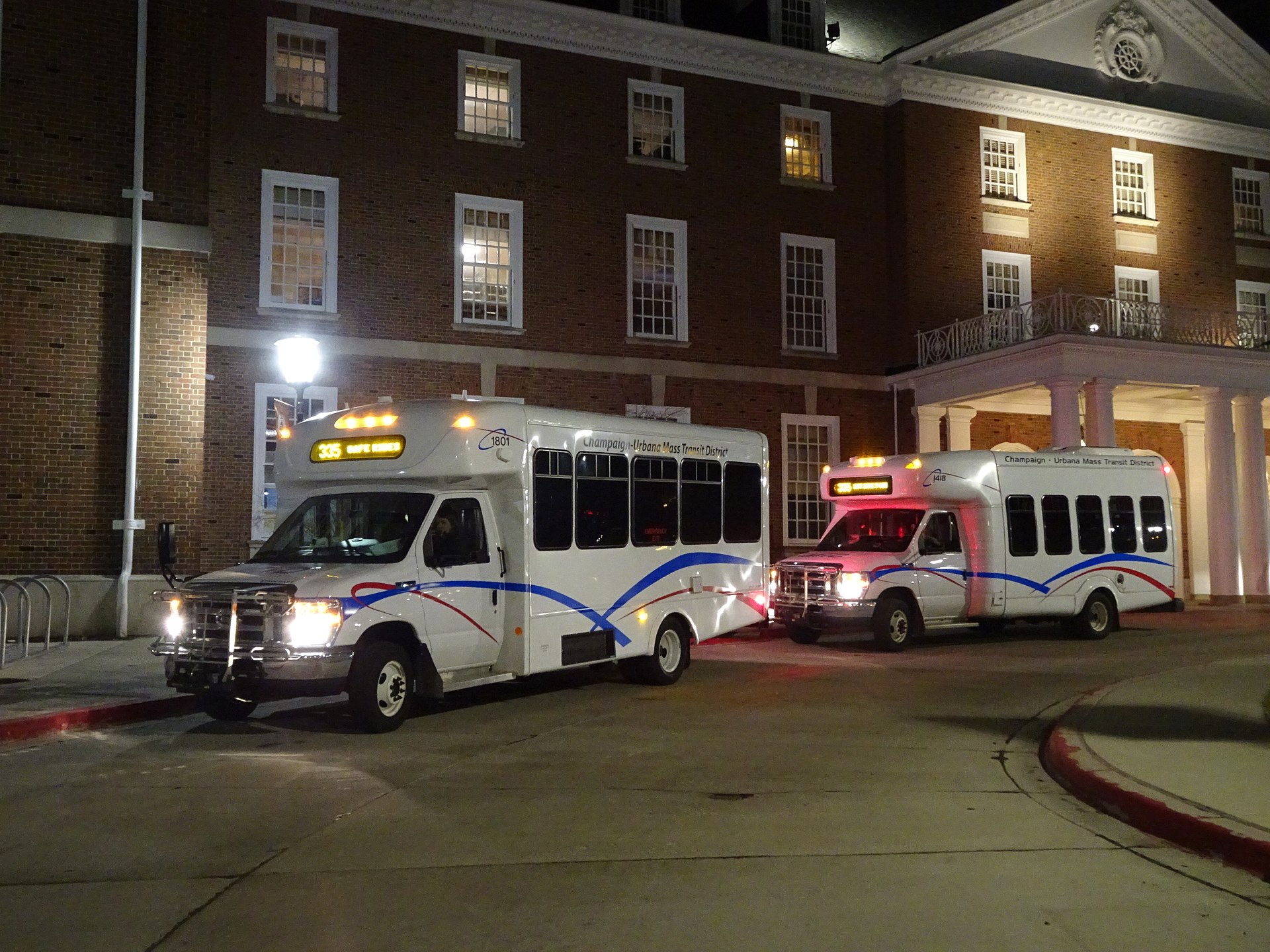In major cities like Chicago, as well as smaller Illinois cities like Galesburg, residents rely on scheduled buses to get around. But transit tends to get spottier the further one gets from urban centers.
Demand responsive transportation services are meant to fill in those gaps. Instead of having fixed routes, they make trips to destinations individual customers need to reach. In more transit-rich areas, paratransit services are used by seniors and people with disabilities. But DRTSs also provide transportation for the general public in areas that have little to no transit.
The problem is that the coverage area tends to vary a great deal depending on how they’re funded and who's providing the service, so getting from one county to another, or even from one town to another, means switching between services and navigating different rules and fare structures. mobility management networks have emerged in several states to try to coordinate the services statewide, but Illinois isn’t one of them.
A recent study by UIC’s Urban Transportation Center looked at how those networks work in practice. It found that they have several major weaknesses: too much reliance on individuals to lead them, as well as issues with formal training, and lack of consistent strategic planning and performance metrics. But Dr. P.S. Sriraj, head of the UTC and the study’s principal investigator, said that, so long as those issues are addressed, Illinois would benefit from that kind of a statewide network. And the Chicago area in particular could benefit from collaborations with service providers in nearby parts of Wisconsin and Indiana.
The Study
In Chicago area alone, demand-response transit services are a mixed bag. McHenry County, the most rural of the six counties within the Regional Transportation Authority’s jurisdiction, and one that has the least fixed-route public transit service, has one provider, McRide Dial-A-Ride. But Kane County, which has significant transit service in and around the cities of Aurora and Elgin, has more of a patchwork.
As Jackie Forbes, chief of planning for the Kane County Division of Transportation, explained during last year’s Transport Chicago conference, various municipalities, townships and nonprofit organizations have agreements with Pace to provide paratransit service. Because each entity has its own agreements, the eligibility requirements, fares and service areas vary, and many parts of the county – especially in the more rural western half – don’t have any service at all. And while providers in both Kane and McHenry counties do make limited trips outside the county limits, there is only so far one can go before switching providers.
The UTC study notes that there are currently 14 states that have some kind of state-wide mobility management network. The closest of these states to Illinois are Iowa and Wisconsin. What those networks actually are varies. For example, in Iowa, the network is managed by the state transportation department, while in Wisconsin a nonprofit organization is in charge.
Based on interviews with the officials involved with those networks, the study found several major issues. There was no standard training curriculum about how to run those networks, or for officials running individual demand response transit providers. This is especially notable since only half of the officials interviewed had background in the industry.
This is related to another major issue: The networks tend to be reliant on their manager’s expertise. While that helps the network, it also means that they tend to rely too much on one person, so that individual is left to juggle a lot of tasks, and there isn’t a clear plan for what will happen if that person leaves the job.
The study also pointed to a lack of “comprehensive documentation, strategic planning [and] performance measurements,” as well as lack of opportunity for officials to network with their peers in other states.
Still, the report concluded that the statewide networks have a strong foundation that can built upon. “There is good reason, however, to anticipate that statewide mobility management networks are poised for greater success because of the individuals that comprise them and the growing acknowledgement of the crucial role these networks play in improving transportation for all riders,” it stated. “As the interviews demonstrate, coordinators and other mobility management professionals are deeply committed to their work and seek new and creative resources to fulfill their agency’s or organization’s mission.”
How this applies to Illinois
Sriraj said that Illinois would benefit with from a statewide mobility management network, since that would allow for seamless coordination between various providers and help plan service development and expansion. He said he would prefer to see it set up through the Illinois Department of Transportation, citing Wisconsin as a good model.
“I think they've done more formal outreach and triaging manuals that they put together in terms of training curriculum for mobility managers,” he said. “They managed to piece together funding for [their] mobility management network, albeit not very formally. They were able to sustain themselves.”
Sriraj added that there need to be conversations between public transit districts, demand-response transit providers and human service organizations throughout the state to not only better understand the state’s mobility needs, but to ensure that the entities work together toward filling in existing service gaps. The Chicago Metropolitan Agency for Planning needs to be involved as well, he said. And Sriraj feels the state needs to revive the Illinois Coordinating Committee on Transportation, which, as the name implies, was created to encourage the coordination between transit services, especially when it comes to serving the state’s most vulnerable populations. He sat on that committee before, and said he would be happy to do so again.
“We [would] get together and we would talk, once every quarter or so, to talk about those issues,” Sriraj said. “Putting in that in place with IDOT or CMAP or something else, there needs to be a forum for it.”
The state would also need to hire a coordinator and have some funding “just to get it started,” Sriraj added.
There are several parts of Illinois where public transportation crosses state lines, including Chicagoland, the Quad Cities, St. Louis’ Illinois suburbs. The South Shore Line commuter railroad links Chicago and northwest Indiana, and Metra's Union Pacific North line serves Kenosha, Wisconsin. Pace Suburban Bus provides limited service to Hammond, Indiana, and Western Kenosha County Transit has been providing limited service to Antioch, Illinois, which otherwise doesn’t have any transit service, except for Metra's North Central Service line.
Would it make sense to coordinate demand-response services across state lines as well? “We have to be careful about talking about crossing state boundaries, because of the significant issues of funding,” Sriraj replied.
But he added that the need is definitely there. Sriraj expects the six-county region to grow, with more people traveling to Chicago not just from further-flung Illinois counties, but also from neighboring counties in Wisconsin and Indiana. “When it happens, there has to be a way to managing demand,” Sriraj said. “And from that perspective, state-wide or multi-state work would be beneficial, yeah.”




